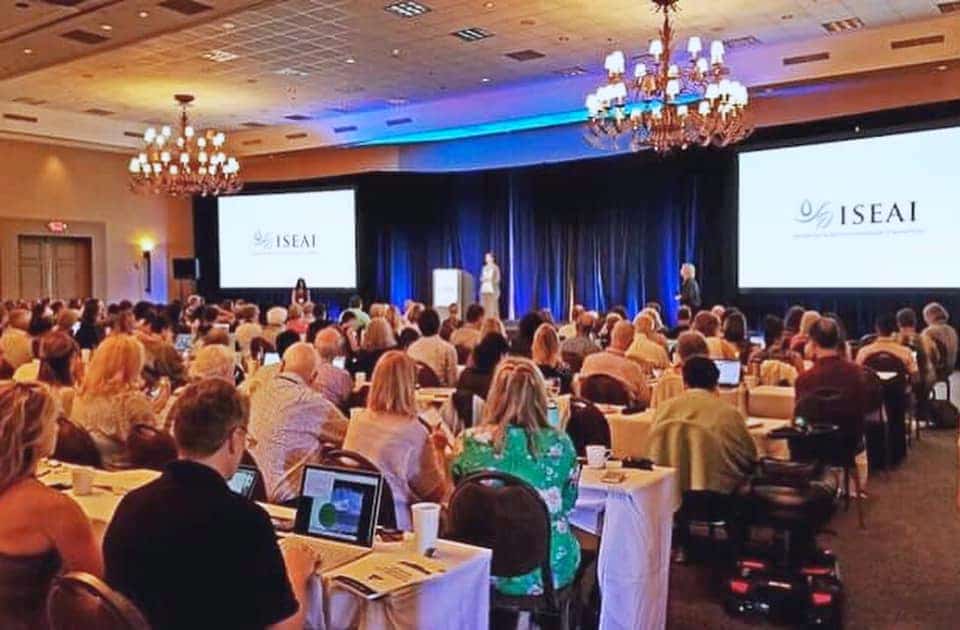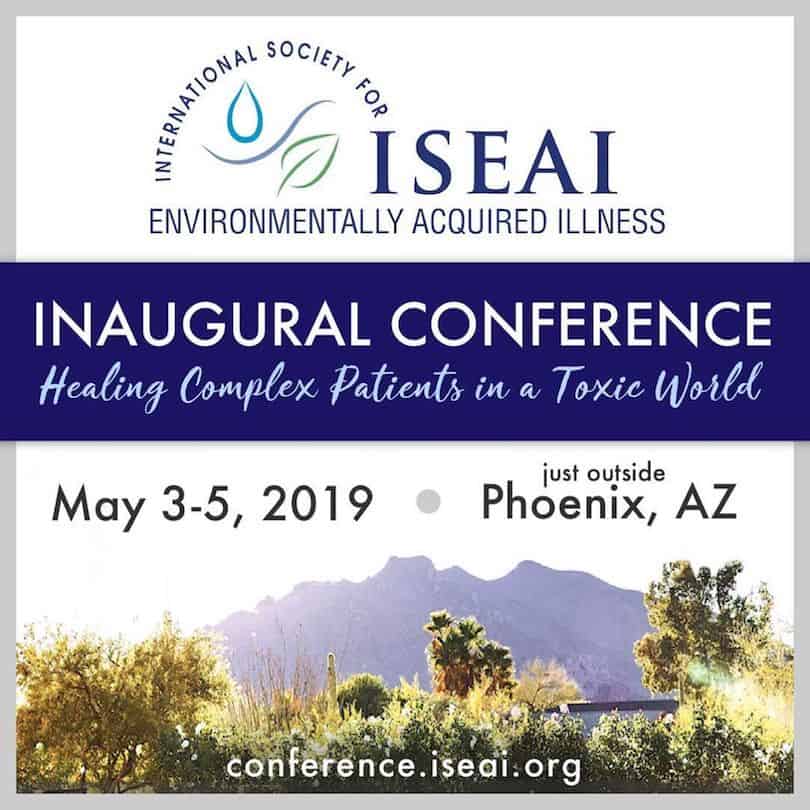[ad_1]
By: BioDesign Wellness Center Staff
June 17, 2019 | Category: Environmental Toxins
Editor’s Note: Last week’s post, which focused on the connection between mold and psychiatric illness, referenced the first annual International Society for Environmentally Acquired Illness (ISEAI) Conference in Phoenix, Ariz. That professional gathering included doctors and others in the healthcare field who are blazing trails in the diagnosis and treatment of environmentally acquired illnesses. Today’s post features a report from one of those pioneering doctors — BioDesign Wellness Center’s own Dr. Matthew Lewis, DC, DACBN, CFMP. Below is Dr. Lewis’ report from the conference, including insights on how the event is shaping our own approach to healthcare:
The 2019 ISEAI conference featured valuable information shared by pioneering healthcare practitioners from a variety of backgrounds. What I found most valuable were the healthcare providers who spoke about their work with patients suffering environmentally acquired illness, as well as indoor environmental professionals (IEPs), who check homes for water damage, volatile organic compounds (VOCs) and mold. The IEPs provided insight into what goes on in patients’ homes, and how that activity has an impact on labs and test results that we review back in our offices.
Environmentally Acquired Illness is something we’re keenly aware of here at BioDesign Wellness Center, so it was beneficial for us to gain additional insight into the field. It was also good to see hundreds of doctors — some new to this field of environmental medicine — learn for the first time how a patient’s home or workplace environment can be the source of the chronic and debilitating conditions they see in their practice.
The Prevalence of Water Damaged Buildings and Mold
The overarching theme of the conference was the prevalence of water damage and mold in buildings, including homes and commercial buildings.
I had discussions with several doctors who had their patients’ homes checked for water damage and mold due to unresolved health symptoms those clients were experiencing. It’s astounding to me how many people suffer from the indoor air quality in their environment, then visit dozens of health providers who never raise this concern. I am happy to know more doctors in the field will be paying attention to this, and that this conference was organized expressly to address these concerns.
Using Binders to Detoxify
Neil Nathan, MD, who is board certified in Family Practice and Pain Management and is a founding Diplomate of the American Board of Integrative Holistic Medicine, presented a talk that covered the use of binders to absorb environmental toxins, including mold toxins. Dr. Nathan said that in his 25 years of clinical experience, he has determined that prescription cholestyramine (CSM) — as described and published by Dr. Ritchie Shoemaker — is not always the best option for patients exposed to mold toxins. He said doctors need to remain flexible regarding treatment and open minded about each patient’s unique symptoms.
As part of his talk, Dr. Nathan reviewed a variety of natural binders, including liquid bentonite clay and glass-produced chlorella. Chlorella is an algae known to bind heavy metals and other biological toxins. He expressed concerns with the use of “natural chlorella,” saying it can pick up heavy metals from its own natural environment.
When prescribing binders, Dr. Nathan expressed the need for some patients to move slowly by continuously measuring and adjusting the balance of the binder upward, based on tolerance. His consensus is that binders should be taken at least two times daily, but for more sensitive patients, a daily dose over a longer period of time might prove helpful.
Heavy Metals
Another speaker — Dr. Lyn Patrick ND, a former contributing editor of Alternative Medicine Review — detailed the health impacts of exposure to heavy metals found in soils that make their way into our food and water supply. Dr. Patrick also pointed to research showing even half of a dental amalgam has the potential to create a body burden of mercury that can create chronic inflammation and lead to brain fog and cardiovascular problems.
Dr. Patrick also discussed a case of arsenic poisoning in a patient who was losing her job because she could no longer function. When the patient’s tap water was tested it, was found to contain high levels of arsenic. That discovery, along with appropriate treatment, enabled the patient to return to work. This is another example of why assessing a patient’s environment is critical to adequate treatment.
Lyme Disease and Other Chronic Infections
The difficulty in clarifying the diagnosis of Lyme disease was discussed at great length during the conference. There was consensus that, in the absence of positive lab findings, doctors should dig deeper into a patient’s health history. Does the patient live or has the patient lived in a Lyme-endemic region? Do the current symptoms match the symptoms of Lyme disease?
Richard Horowitz, MD delivered a talk on how to assess and treat a patient with chronic Lyme disease, while stressing the importance of prevention. Dr. Horowitz is among the founding members and a past president- of the International Lyme and Associated Diseases Society (ILADS) and the author of two best-selling books on Lyme disease — Why Can’t I Get Better? Solving the Mystery of Lyme and Chronic Disease(2013, New YorkTimesBest Seller), and How Can I Get Better? An Action Plan for Treating Resistant Lyme and Chronic Disease (2017, national bestseller). He has also published studies showing the validity of the Horowitz Lyme and Multi-Systemic Infectious Diseases Syndrome (MSIDS) Questionnaire.
He told his audience that MSIDS is a symptom complex of Lyme disease and multiple associated tick-borne co-infections that encompasses not only infections with Borrelia burgdorferi — the etiological agent of Lyme disease — but also other bacterial infections, viral infections, parasitic infections, and fungal infections.
Joseph J. Burrascano, Jr., MD, best known for his monographs on diagnostic and treatment guidelines for Lyme and related tick-borne illnesses (a classic series that has been freely circulated around the world since the late-1980s), discussed novel approaches to diagnosing Lyme that are arriving on the health scene. While not widely available today, he said skin biopsy appears to be a promising method for diagnosing Lyme. That’s because Lyme bacteria does not usually hang out in the bloodstream, instead penetrating deeper into tissues where it can manifest disease. Checking a reservoir for Lyme through a skin biopsy is a simplified way of identifying the pathogen where it lives. Testing is awaiting approval, and we will hear more on this subject in the future.
Growing Concerns
Overall, doctors at the conference concurred there is much more to learn about environmentally acquired illness, with growing concerns regarding pollutants to which we have been exposed over many years entering our waterways, food supply, soil, and air, including the following:
- Chemical products present in our personal care products — many of them known endocrine disruptors.
- Toxins in our homes, schools, and workplaces, including toxic mold, chemical cleaners, pesticides, building materials, and furnishings.
- The environmental impacts of global warming and increasing bacterial and viral infections, including those spread by mosquitoes, ticks, and spider bites.
- Red tides and algal blooms — certainly a concern here in Tampa — and also in other areas across the country.
- Electromagnetic frequency (EMF) and 5G transmissions that constantly bombarding us with signals from our electronics.
All of these threats must be raised in our collective consciousness if we are going to find solutions to the increasing incidents of brain fog, chronic fatigue, hormone imbalances, bizarre neurological symptoms, hypometabolism and weight gain, autoimmune thyroid disease, multiple sclerosis, Alzheimer’s, and early stages of dementia.
It’s a long list, and when viewed from an environmentally and holistic framework, many of these conditions theoretically, and through published literature, can be explained. As an example, diabetics are found to have higher levels of plastics in their urine. Is that an effect of diabetes or a cause?
In the end, we will all lose out if we continue to seek one cause and one cure. Today’s chronic health conditions are complex and require a unique understanding of all of the internal and external environmental factors involved in each patient’s unique case.
The Good News
While all of this appears to be overwhelming, the good news is many doctors at the International Society for Environmentally Acquired Illness Conference have discovered success in treating these difficult cases when conventional medicine failed. Many of these doctors, who began their careers practicing conventional medicine, are now finding solutions by looking for root causes and following up with targeted therapies.
[ad_2]
Source link



